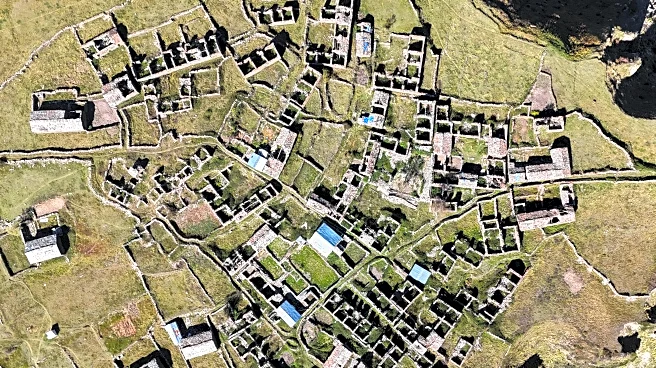What's Happening?
The Char Dham pilgrimage circuit in the Western Himalaya, India, is undergoing strategic planning to promote sustainable tourism. The region, which significantly contributes to the economy of Uttarakhand
state, faces challenges due to increasing visitor numbers, which are expected to reach 6 million by 2025. This influx raises environmental and management concerns, such as waste generation and ecological degradation. The study highlights the need for sustainable tourism practices, including waste-to-energy initiatives and decentralized tourism development. The approach involves geospatial analysis and climate change impact assessments to ensure tourism development aligns with environmental preservation.
Why It's Important?
The sustainable tourism strategy for Char Dham is crucial as it addresses the balance between economic benefits and ecological preservation. The region's tourism industry generates significant revenue and employment, but unchecked growth could lead to environmental degradation. By implementing sustainable practices, the strategy aims to protect the region's natural resources while supporting local communities. This approach aligns with global sustainable development goals, promoting responsible tourism that benefits both the economy and the environment. The strategy's success could serve as a model for other regions facing similar challenges.
What's Next?
The next steps involve implementing the proposed sustainable tourism strategies, which include developing mountaineering villages, promoting adventure tourism, and launching a sustainable travel app. These initiatives aim to decentralize tourism, reducing the environmental impact on major sites by developing satellite spots. Additionally, infrastructure improvements, such as all-weather roads and electric vehicles, are planned to enhance transportation efficiency and reduce emissions. The strategy also emphasizes the need for regulatory measures to manage carrying capacity and pollution, ensuring the long-term sustainability of the region's tourism industry.
Beyond the Headlines
The sustainable tourism strategy for Char Dham highlights the broader implications of balancing tourism growth with environmental preservation. The approach underscores the importance of integrating scientific methods and community engagement in tourism planning. It also reflects a shift towards more responsible tourism practices that prioritize ecological and cultural preservation. This development could influence global tourism trends, encouraging other regions to adopt similar strategies to address the challenges of over-tourism and environmental degradation.












